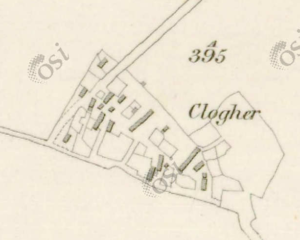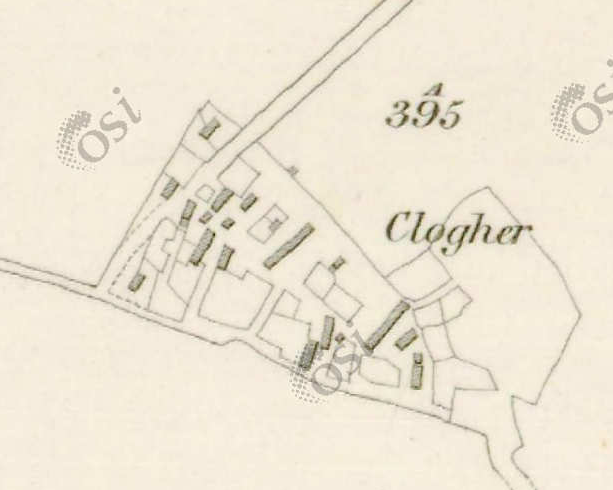 If you have even a drop of Irish blood running through your veins, you are familiar with the Great Famine which started in 1845. While starvation killed tens of thousands, it was actually disease which caused the most deaths (over 400,000).
If you have even a drop of Irish blood running through your veins, you are familiar with the Great Famine which started in 1845. While starvation killed tens of thousands, it was actually disease which caused the most deaths (over 400,000).
On the Mullet, entire villages were wiped off the map to this day, and not a just a few, but many. What is most striking is the terrible toll landlord evictions played. The village of Clogher is one example.
With almost forty homes on 10 acres of land, Clogher was a crowded little village. The landlord was a Dublin lawyer named John Walshe who inherited the land through marriage to a daughter of the (Mc)Cormick family. He didn’t pay any of his required share into Poor Law Fund to help with relief, and over the course of several days before the Christmas of 1847, he evicted the entire village of Clogher.
Actually, he sent his son who arrived with a sheriff and several police who were backed by 50 soldiers. They started tearing down the small huts often with the families still inside. On the start of the second day, the soldiers refused to show up, sickened by the events of the first day. No matter. Walshe and his men continued. They dragged sixty-two families off the property into the ditches, not only destroying the homes, but every stick of furniture inside. With nowhere else to go, the families would return at night to create makeshift shelters using what remained of their homes. And every few days, Walshe and his men would return to tear even those down.
The village was never rebuilt. Today, over 150 years later, no one has seen fit to use those 10 acres. You can still see the outline of the huts that were torn down that Christmas. As shocking as this is, it’s one example from many on the Mullet Peninsula.
_______________________________________
In the video below, We zoom in on the Mullet to the Village of Clogher in 1830, pre-famine. The next map is from 1860 after the famine and you can see the entire village is gone. Today, as seen in the satellite image, the outlines of the original huts remain.
Much of the info for this post came from “Within the Mullet” by Rita Nolan.
